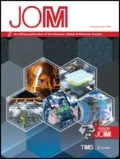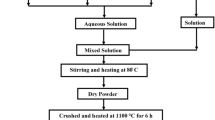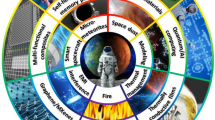Abstract
From the onset of the space era, both organic-matrix and metal-matrix composites (MMCs), with high specific stiffness and near-zero coefficient of thermal expansion (CTE), have been developed for space applications. Of the organic-matrix composites, graphite/epoxy (Gr/Ep) has been used in space for truss elements, bus panels, antennas, wave guides, and parabolic reflectors in the past 30 years. MMCs possess high-temperature capability, high thermal conductivity, low CTE, and high specific stiffness and strength. Those potential benefits generated optimism for MMCs for critical space system applications in the late 1980s.1,2 The purpose of this article is to detail the history, status, and opportunities of MMCs for space applications.
Similar content being viewed by others
References
Jerry G. Baetz, “Metal Matrix Composites: Their Time Has Come,” Aerospace America (November 1998), pp. 14–16.
W.S. Johnson, “Metal Matrix Composites: Their Time to Shine?,” ASTM Standardization News (October 1987), pp. 36–39.
D.R. Tenny, G.F. Sykes, and D.E. Bowles, “Composite Materials for Space Structures,” Proc. Third European Symp. Spacecraft Materials in Space Environment, ESA SP-232 (Noordwijk, Netherlands: European Space Agency, October 1985), pp. 9–21.
M.E. Buck and R.J. Suplinskas, “Continuous Boron Fiber MMC’s,” Engineered Metal Handbook, Vol. 1 (Materials Park, OH: ASM, 1987), pp. 851–857.
D.M. Goddard, P.D. Burke, and D.E. Kizer, “Continuous Graphite Fiber MMC’s,” Engineered Materials Handbook, Vol. 1 (Materials Park, OH: ASM, 1987), p. 867.
A.J. Juhasz and G.P. Peterson, Review of Advanced Radiator Technologies for Spacecraft Power Systems and Space Thermal Control, NASA TP-4555 (1994).
S.P. Rawal and M.S. Misra, “Dimensional Stability of Cast Gr-Mg Composites,” 19th International SAMPE Conference (Covina, CA: SAMPE, October 1987), pp. 134–147.
C. Thaw et al., “Metal Matrix Composites for Microwave Packaging Components,” Electronic Packaging and Production (August 1987), pp. 27–29.
D.B. Miracle and B. Maruyama, “Metal Matrix Composites for Space Systems: Current Uses and Future Opportunities,” Proc. National Space and Missile Materials Symp., ed. M. Stropki (Dayton, OH: Anteon Corp., 2000).
C.C. Carlson, “Polymer Composites: Adjusting the Commercial Marketplace,” JOM, 45 (8) (1993), pp. 56–57.
Author information
Authors and Affiliations
Additional information
Editor’s Note: A hypertext-enhanced version of this article can be found at www.tms.org/pubs/journals/JOM/0104/Rawal_0104.html.
For more information, contact S.P. Rawal, Lockheed Martin Space Systems-Aeronautics Operations, Advanced Structures and Materials and Thermal Control Group, Denver, Colorado.
Rights and permissions
About this article
Cite this article
Rawal, S.P. Metal-matrix composites for space applications. JOM 53, 14–17 (2001). https://doi.org/10.1007/s11837-001-0139-z
Issue Date:
DOI: https://doi.org/10.1007/s11837-001-0139-z




